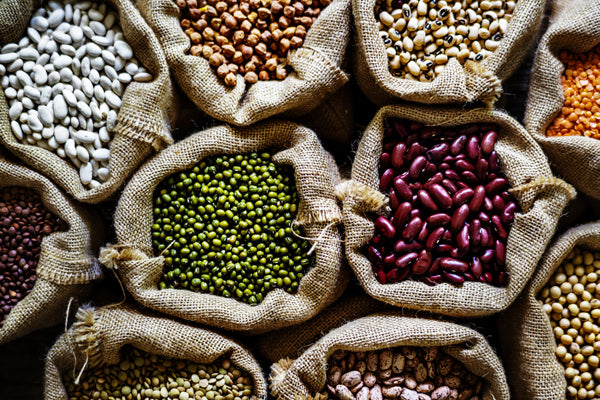Widely re-evaluated today precisely because of their vegetable origin, legumes were once called "the meat of the poor" , as if to say that, although they are not meat in all respects - once a valuable food par excellence - even legumes they were nonetheless an important source
of nutrients, and of proteins in particular. And it was true, as nutritionists still confirm, with the addition, however, that legumes are much more than a mere alternative to meat. Rich in iron, phosphorus, magnesium, calcium, potassium, fiber, vitamins (and, of course, vegetable proteins), their contribution to the diet is clearly vaster, without considering their high versatility in the kitchen (as we will see in the following pages, legumes lend themselves to the preparation of numerous recipes).
The term legumes refers to a large family of seeds , produced by the so-called legumes , among which the most popular in our country are beans (borlotti, di Spagna, cannellini, azuki...), peas, broad beans, lentils and chickpeas, but also peanuts and soybeans, while lupins and cicerchie have a much lower diffusion.
Legumes can be eaten both fresh and dried, but they can also be found on the market preserved in jars or frozen. Dry ones, in particular, represent the best protein reservoirs, with a content that is more than double that of cereals and even greater than that of meat, although of lower nutritional quality. To improve the protein quality of legumes, it is recommended to combine them with cereals: this is when dishes such as pasta and beans, rice and peas or couscous and chickpeas have become musts - each with its specific variations and local specialties - in Worldwide.
Other properties
Legumes help to lower blood cholesterol levels , thanks to the high presence of lecithin, while the carbohydrate content gives them a good energy power. With the exception of soy, rich in precious polyunsaturated fats, legumes are low in fat and therefore indicated in hypolipidemic diets. The fibers in considerable quantities make them satiating foods, helping to prevent, among others, obesity, diabetes, constipation and atherosclerosis. In any case, it is better not to overdo it, as excessive consumption can lead to bloating and abdominal tension, meteorism, flatulence and sometimes diarrhea.



